Field notebooks are the same size as the CM manuals with 100 lined pages. Hopefully, they’ll add some with gridded pages.
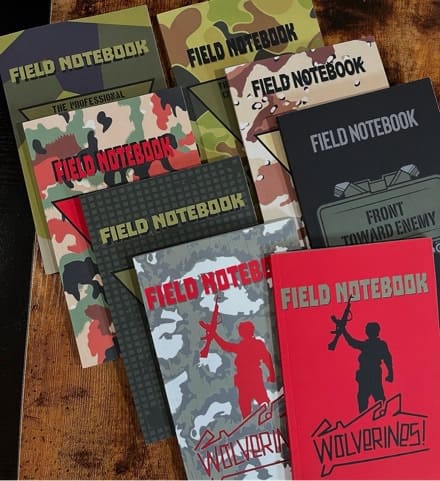
Offered with various camouflage pattern covers.
Field notebooks are the same size as the CM manuals with 100 lined pages. Hopefully, they’ll add some with gridded pages.

Offered with various camouflage pattern covers.
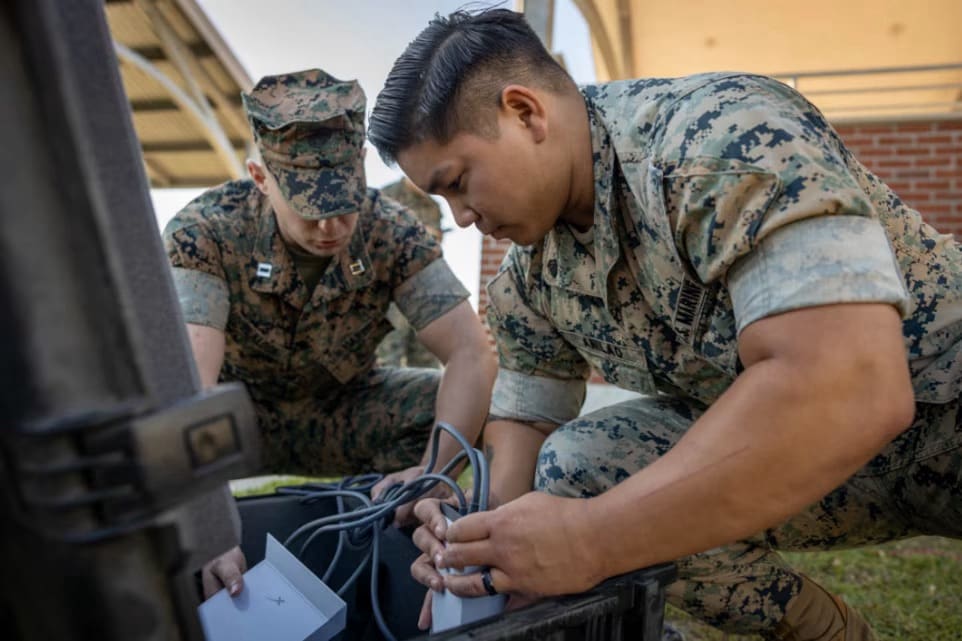
Marine Corps Base Quantico, Va. —
As the world continues its march into an era of great power conflict, modern warfare is increasingly defined by rapid technological advancements, contested logistics, and the need for resilient communications. Today, reliable connectivity not only enables operations—but rather is the backbone of warfighting, spanning multiple technologies and frequencies to ensure coordination, adaptability, and success, even deep behind enemy lines.
In preparation for this new operational reality, the Marine Corps is advancing Force Design, its comprehensive blueprint for modernization. This effort emphasizes decentralization, agility, and the ability to sustain operations in contested domains.
At the forefront of this modernization effort is the Satellite Communication Agile Reachback (SCAR) program. Overseen by MARCORSYSCOM’s Program Manager Tactical Communications and Electromagnetic Warfare Systems and Product Manager High Capacity Communications, SCAR harnesses commercial terminals to deliver wideband satellite connectivity, specifically tailored to the needs of the Marine Corps.
“SCAR is about providing Marines with the connectivity they need to operate effectively in contested environments,” said Jacob Menders, SCAR project officer. “By leveraging existing commercially available technology, we’re not only enhancing communication reliability but also ensuring the flexibility and resilience required for distributed operations. This system was designed with the warfighter in mind, combining cutting-edge technology with the practicality needed to meet the demands of modern battlefields.”
SCAR’s origins lie in the ingenuity of forward-deployed Marines, who began purchasing commercial terminals with unit funds to address gaps in legacy satellite systems. Recognizing the potential of this off-the-shelf solution—and keeping an ear to the ground for warfighter feedback– the Program Office stepped in to formalize and scale the capability, ensuring it would be standardized, sustained, and cost-effective across the force.
To accelerate delivery, the SCAR team partnered with the Navy to leverage its proven Satellite Terminal (transportable) Non-Geostationary (STNG) program. This collaboration, which utilized an existing contract vehicle, saved the Marine Corps between nine to twelve months of acquisition time, demonstrating the value of inter-service partnerships and the importance of rapid, industry-driven solutions to meet the demands of modern warfare.
SCAR’s implementation is structured in phases, ensuring immediate benefits while allowing for future enhancements. Phase one will begin in the second quarter of FY25 with the fielding of SCAR terminals to expeditionary forces. These terminals, designed for plug-and-play functionality, require minimal training and offer instant access to resilient, high-speed communications in contested and remote environments. For expeditionary operations aligned with the operational posture, SCAR provides a critical capability to maintain connectivity and coordination behind enemy lines.
Future phases will build on this foundation. By FY26, SCAR will expand to include transport-layer diversity and multi-vendor competition, ensuring the system remains resilient and adaptable to evolving threats. The long-term vision includes developing multi-band, multi-orbit terminals capable of operating across various satellite constellations, delivering unmatched flexibility. This phased approach ensures SCAR evolves alongside the Marine Corps’ broader modernization efforts, maintaining its relevance in the face of rapidly changing technologies and adversarial capabilities.
According to Dr. Tarah Goggins, WSATCOM Team Lead, “Geostationary satellites operate as static points in orbit. You target one satellite for communication, and while it provides access, it’s a single, fixed point. If that satellite is taken out, communication is lost entirely. With multiple satellites in motion, they offer enhanced security and redundancy. This ensures Marines can maintain strong, continuous communication, even while on the move, by dynamically accessing different satellites as needed.”
In a June 2023 statement, the Pentagon noted: “We continue to work with a range of global partners to ensure Ukraine has the resilient satellite and communication capabilities they need. Satellite communications constitute a vital layer in Ukraine’s overall communications network and the department contracts with Starlink for services of this type.”
Ultimately, the SCAR program embodies the Corps’ commitment to modernization, adaptability, and warfighter-centric solutions. By addressing immediate communication gaps with cutting-edge commercial technology and leveraging inter-service partnerships like the Navy’s STtNG program, acquisition professionals from MARCORSYSCOM’s PM TCE and PdM High Capacity Communications ensure the warfighter can operate effectively in contested environments and stay ahead of evolving threats.
The lessons learned from operational environments highlight the decisive role connectivity plays in modern warfare, and will seamlessly translate into future littoral environments. As the Marine Corps fields SCAR and continues to refine it in the coming years, the program will remain a cornerstone of the broader Force Design effort—ensuring Marines are equipped to fight and win in an era defined by great power competition.
By Johannes Schmidt, MCSC Office of Public Affairs and Communication | Marine Corps Systems Command
Enhanced hands-free communication for maximum flexibility in the field.. This wireless over-the-glove PTT keeps your radio within reach while ensuring positive control during critical operations. Available in Bluetooth for training or Inter-Soldier Wireless for secure missions, it’s built for seamless performance without the bulk.
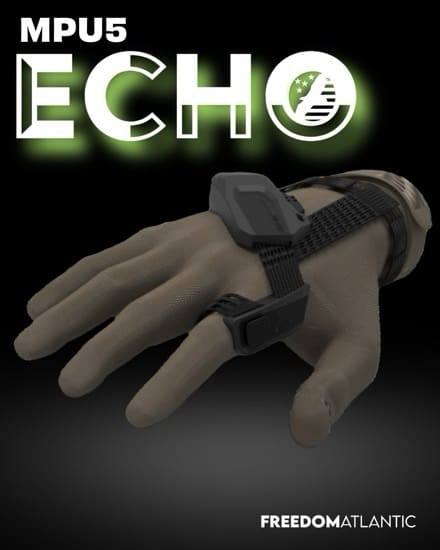
Key features:
Stay connected, stay in control.
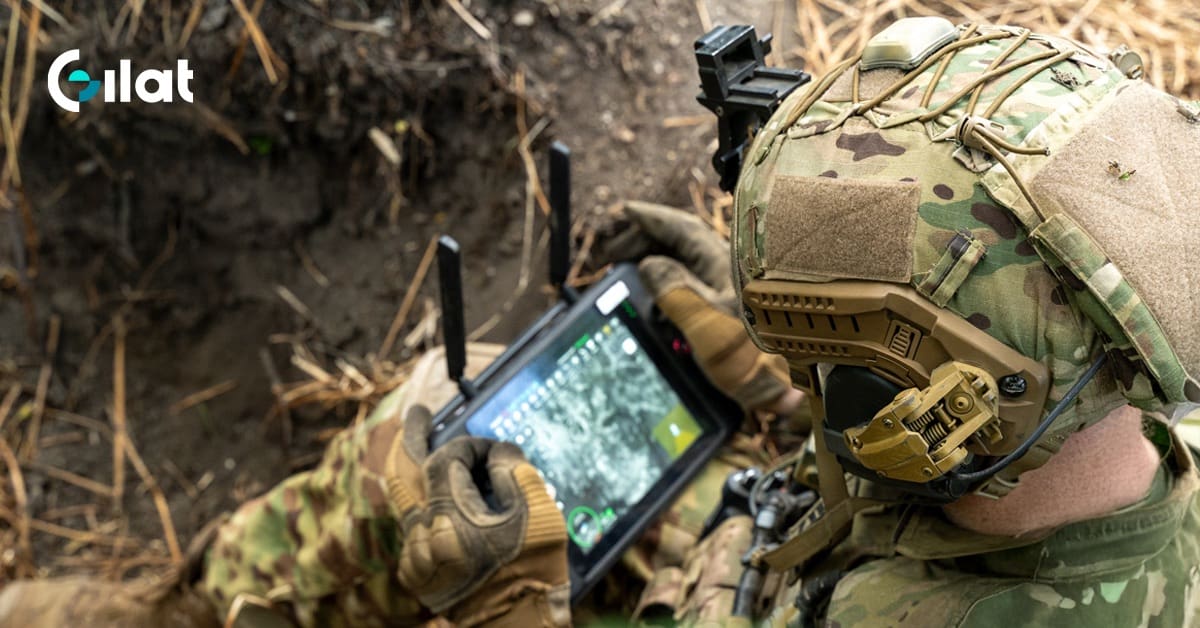
Gilat’s Portable Terminals Deliver Exceptional Performance, Durability and Ease of Deployment
Petah Tikva, Israel, January 28, 2025 —Gilat Satellite Networks Ltd. (NASDAQ, TASE: GILT), a worldwide leader in satellite networking technology, solutions, and services, announced today that its wholly owned US-based subsidiary, Gilat DataPath, has been awarded $4M contracts from global Defense customers. These orders, for the company’s CCT200, CCT120 and QCT90 portable terminals, are slated for delivery over the next 12 months.
Gilat DataPath’s C-Series and Q-Series Portable Satellite Antenna Terminals (PSATs) are renowned for their robust performance and rugged design. Engineered to withstand harsh environmental conditions such as wind, rain, dust, and extreme temperatures, these terminals are rigorously tested to meet the MIL-STD-810G standard while maintaining a compact and sleek design.
The advanced antenna technology powering the CCT200, CCT120, and QCT90 ensures reliable, high-speed connectivity in even the most challenging operational environments. These follow-on orders reflect the continued trust and satisfaction of defense organizations worldwide with Gilat DataPath’s solutions.
“The global defense landscape demands reliable, high-performance communication solutions capable of operating seamlessly under extreme conditions,” said Nicole Robinson, President of Gilat DataPath“Gilat DataPath portable SATCOM terminals are meticulously designed to meet these requirements, offering exceptional durability, ease of transport, and operational simplicity. These terminals empower Ministries of Defense with the critical connectivity they need to support diverse and dynamic military operations.”
Gilat DataPath innovative SATCOM solutions continue to strengthen its position as a trusted partner for defense organizations around the globe, ensuring mission-critical communications are always within reach.
Starting January 27, the StreamCaster Training Program is evolving into a streamlined 4-Day Course to help you maximize your tactical communication skills.
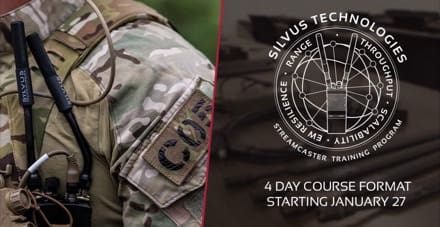
The new format includes 3 Days of foundational training and 1 Day of specialized modules with topics that include Advanced API, PTT, Spectrum Dominance (U.S. citizens only), ATAK & EUDs, and Unmanned Systems.
Designed for Silvus customers and end-users, this immersive training experience equips organizations with the skills & experience to unlock the full potential of #StreamCaster MANET radios for operational success.
Purpose-built to upskill participants from novice to expert, this program will cover advanced network design, deployment strategies, and best practices for building resilient mesh networks in any environment.
The StreamCaster Training Program is held monthly at Silvus Technologies headquarters in Los Angeles. Seating is limited – don’t miss the chance to elevate your team’s expertise. Can’t make it out to Los Angeles? No problem, Silvus can also conduct onsite training on the go.
2025 COURSE SCHEDULE
SILVUS HQ, LOS ANGELES, CA
January 27 – 30
March 24 – 27
May 19 – 22
July 28 – 31
September 22 – 25
November 17 – 20
To learn more about, and register for Silvus HQ classes, and in-field training opportunities visit: bit.ly/3tYrSwu
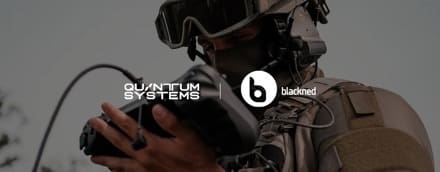
Munich, 23.01.2025 – Quantum Systems and blackned are pleased to announce their intent to collaborate on the digitalization and secure networking of unmanned elements in modern battlefield environments. This groundbreaking partnership aims to combine Quantum Systems’ advanced multi-sensor unmanned aerial systems (UAS) with blackned’s Tactical Core Information and Communication Middleware, setting a new and advanced standard for operational efficiency and integration.
“The support of different transmission systems and the application independence ensure a high degree of adaptability, from manned and unmanned platforms to missions, use cases and systems already in use,” says Dr. Joel Langenberg, CEO of blackned.
Based on open interfaces and software development kits, the most suitable third-party applications can be integrated and put into operation. “This partnership marks a significant step to a secure multi-domain data transfer”, said Sven Kruck, Co-CEO of Quantum Systems. By supporting various transmission systems and maintaining application independence, the partnership offers unprecedented flexibility for military operations. This opens a whole new world for the German Armed Forces.
The partnership underscores both organizations’ commitment to innovation and providing military forces with cutting-edge solutions to navigate the complexities of modern warfare.

“This partnership marks a significant step to a secure multi-domain data transfer, adding an additional layer of flexibility for military operations.”
Sven Kruck
Co-CEO, Quantum Systems

“The support of different transmission systems and the application independence ensure a high degree of adaptability, from manned and unmanned platforms to missions, use cases and systems already in use.”
Dr. Joel Langenberg
CEO, blackned GmbH
INVISIO acquires UK company Ultra PCS’s UltraLYNX™ product line, which enables seamless integration of devices from different suppliers, creating an ecosystem within the modern soldier system. A number of employees at Ultra PCS will join INVISIO as part of the USD 3,5 million transaction.
UltraLYNX™ software-defined hubs enable seamless integration of devices from different suppliers, including those not originally designed to work together. The product line creates an ecosystem that provides audio, data connectivity and power, reducing the cognitive and physical burden on users.
This strategic acquisition will enhance INVISIO’s ability to deliver fully integrated tactical body-worn systems capable of handling audio, power and data, along with leading-edge computing power. It will allow INVISIO to provide a seamless and robust plug-and-play communication system that meets the evolving needs of modern military and defense operations.
The UltraLYNX™ product will be seamlessly integrated into the INVISIO ecosystem, acting as a catalyst for the development of future innovative and cutting-edge products.
INVISIO facilitates the modern soldier system
The modern soldier system is a complex network of devices—radios, weapon sights, navigation tools and sensors—sourced from different suppliers with unique standards. These devices must share data, audio and power within a unified ecosystem.
Integration is challenging due to differing protocols and power demands and the need for real-time communication. UltraLYNX™ simplifies this process by harmonizing protocols, managing power and enabling seamless device interoperability. As a result, soldiers can focus on their mission without being burdened by complex setup requirements and incompatible equipment.
The deal is completed today and UltraLYNX™ will be fully incorporated under the INVISIO brand.
Lars Højgård Hansen, INVISIO CEO, commented: “This acquisition aligns with our strategic vision to expand and enhance our product offerings and provide our customers with cutting-edge solutions that improve operational efficiency and effectiveness. The UltraLYNX product line will add significant capabilities to our already market leading soldier systems.
The acquisition strengthens INVISIO’s position in our markets, which are undergoing a digital transformation. We expect, after the initial integration, that the product line will contribute significantly to INVISIOs revenues in 2026 and onwards.”
Providing Protected and Secure Communications for Mission-Critical Operations Achieves National Institute of Standards and Technology – Federal Information Processing Standards Security Requirements for Cryptographic Modules
• Unmatched Data Security – StreamCaster MANET radios’ cryptographic modules meet the NIST’s most rigorous cryptographic security standards for protecting sensitive information data, while offering support for advanced encryption standards including AES-256 to safeguard sensitive data against modern threats.
• International Recognition – FIPS 140-3 aligns with ISO/IEC 19790:2012 ensuring global cryptographic consistency with U.S. and allied partner nations’ encryption standards, enabling secure and protected communications across multi-national operations.
• Level 2 Security Features – In addition to meeting NIST’s advanced cryptographic security requirements, StreamCaster MANET radios provide Level 2: Role-Based Authentication, including physical security measures and ensuring that only authorized users can access cryptographic functions.
• Future-Proof Encryption – Accessible from Silvus’ proprietary StreamScape 5 network management software, FIPS 140-3 delivers lifecycle security for users from network design to deployment.
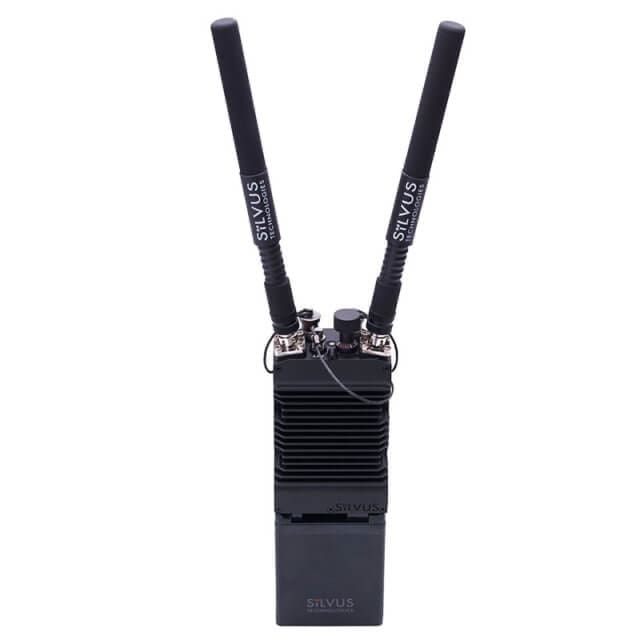
Los Angeles, CA – January 22, 2025 – Silvus Technologies (“Silvus”), a global leader in advanced wireless networking solutions, today announced that its StreamCaster MANET radios are the first and only tactical radios with cryptographic modules to receive FIPS 140-3 Level 2 validation. By achieving FIPS 140-3 Level 2 validation, Silvus reinforces its position as a trusted provider of secure, resilient communication solutions that defense, law enforcement agencies, and critical infrastructure operators rely on for mission-critical communications in any operational environment.
StreamCaster MANET radios provide high-fidelity video, voice, and IP data communications – delivering actionable intelligence at the speed of relevance. At the heart of every StreamCaster MANET radio is Silvus’ battle-proven MN-MIMO waveform, capable of linking hundreds of nodes with unmatched range, data throughput, EW resiliency, and scalability. Applicable radio models now available with FIPS 140-3 Level 2 encryption include SC4200, SC4400, SL4200, and SM4200.
“We are proud to achieve FIPS 140-3 Level 2 validation, a milestone that highlights our dedication to providing the most advanced tactical communication solutions,” said Weijun Zhu, Vice President of Engineering at Silvus Technologies. “Certification of StreamCaster MANET radios ensures that our customers can operate with confidence, knowing their sensitive communications are safeguarded from compromise in even the most contested environments.”
Federal Information Processing Standards (FIPS) 140-3 Level 2 validation, established by the National Institute of Standards and Technology (NIST), ensures that StreamCaster MANET radios meet the U.S. Government’s highest security requirements for cryptographic modules to protect sensitive data. This standard provides operators with the confidence that their communications remain secure in high-risk, mission-critical operations. Silvus’ achievement of FIPS 140-3 Level 2 validation brings significant advancements over the previous FIPS 140-2 standard, including:
• Alignment with ISO/IEC 19790:2012 for global interoperability and consistency with global cryptographic security.
• Enhanced Level 2 Security provides additional protection including physical tamper evidence and role-based authentication, where access to the cryptographic module is controlled by user roles allowing different levels of permission.
• Lifecycle security evaluations from design to deployment.
• Mandate for more advanced cryptographic algorithms, including SHA-3 as the primary hashing algorithm and AES as the only approved symmetric encryption algorithm.
Governments worldwide are transitioning to FIPS 140-3 to bolster cybersecurity. In the United States, federal agencies are required to use FIPS 140-3 validated modules, with September 2026 set as the sunset date for FIPS 140-2 certificates. Through the Cryptographic Module Validation Program (CMVP), Canada’s Communications Security Establishment (CSE) jointly validates FIPS 140 modules with NIST, ensuring compliance across North America. Additionally, FIPS-validated modules are widely adopted by governments and organizations in countries like the UK, Australia, and Japan to ensure robust cryptographic protections for their national security and critical infrastructure.
Current Silvus customers are now able to access FIPS 140-3 Level 2 encryption and capability enhancements through a software update in the StreamScape 5 network management software. Learn more about the StreamCaster family of MANET radios and their FIPS 140-3 Level 2 validation (Certificate # 4936) at csrc.nist.gov. Stay connected with Silvus on LinkedIn for the latest updates.